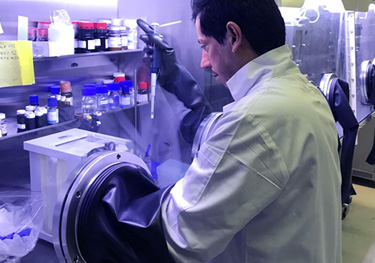
The formulation of drugs that have poor solubility and low bioavailability is of critical importance in the development and testing of new treatments. Furthermore, the controlled release of drugs at targeted sites within the body may be hindered by these undesirable properties, and developing novel formulations to overcome these obstacles represents a significant challenge in pharmaceutical chemistry. The water soluble, sugar-derived macrocycles called ‘cyclodextrins’ (CDs) have great potential with regard to drug formulation, as they are non-toxic and have the capacity to increase the bioavailability of poorly-soluble hydrophobic drugs. We can arrange γ-CD into a three-dimensional network by coordinating it with alkali metal cations, generating a metal-organic framework (MOF) referred to as ‘CD–MOF’. CD–MOF is a highly porous material that, owing to being grown from FDA-approved components, could be an effective delivery vehicle for drugs when used in drug formulations. Drugs that are loaded within CD–MOF may possess enhanced physicochemical stability, improved dissolution, and bioavailability as compared to other currently available formulations (e.g. silica nanoparticles, liposomes, micelles, emulsions, and dendrimers). In addition to evaluating the performance of CD–MOF in drug encapsulation and delivery, its ability to separate chiral molecules will be further explored. This may lead to the selective loading of CD–MOF with a pharmaceutically active enantiomer that will have great implications on drug formulation and delivery in addition to simplifying drug synthesis and improving its cost-effectiveness.
This project aims i) to determine whether CD–MOF is suitable for drug encapsulation and delivery; ii) to determine the pharmacokinetics and bioavailability of the complexes; iii) investigate the enantio-selective properties of CD–MOF for drug synthesis and formulation; and iv) develop CD–MOF–based composite materials to enhance the aqueous stability of CD–MOF and optimize its separation properties. The development of effective CD–MOF systems can improve the efficiency and efficacy of drug delivery and healthcare products and will provide higher qualities of healthcare.